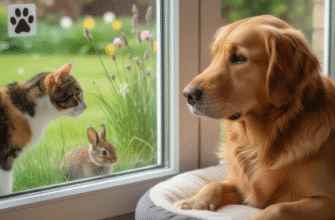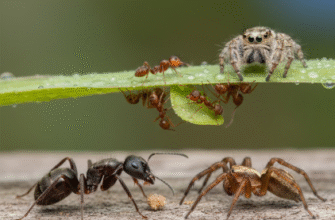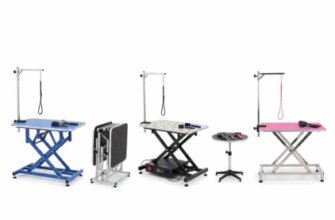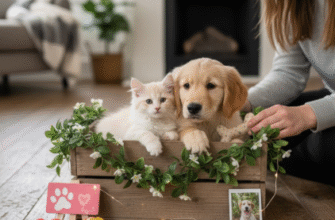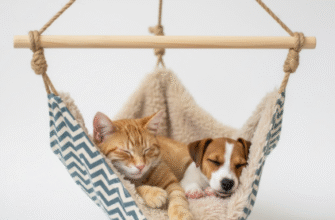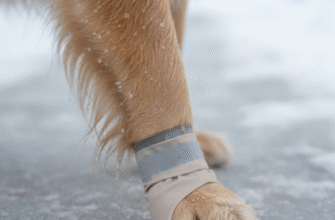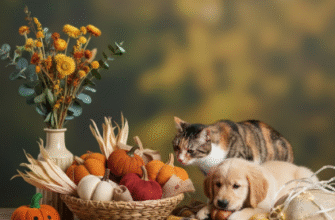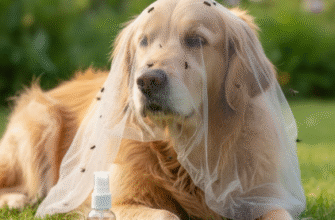Getting creative with crafts is a wonderful way to unwind and personalize your space. If you share your home with furry, feathered, or scaled companions, though, a new layer of consideration comes into play: ensuring the materials you use won’t harm them. Many standard craft supplies contain substances that can be toxic if ingested or even inhaled, especially for smaller animals or those prone to chewing. Choosing pet-safe paints and materials is crucial for peace of mind and the well-being of your beloved animals, particularly when making items they might interact with, like toys, perches, beds, or decorative pieces within their reach.
Why Standard Craft Supplies Can Pose Risks
Before diving into safer alternatives, it helps to understand the potential dangers lurking in common craft materials. Many conventional paints, varnishes, glues, and even some plastics or composite woods contain harmful chemicals. Pets can be exposed through licking or chewing finished items, inhaling fumes while products are drying (or even off-gassing later), or getting substances on their fur and ingesting them during grooming.
Volatile Organic Compounds (VOCs) are a major concern. These are gases emitted from certain solids or liquids, found in many paints, sealants, glues, and cleaners. VOCs can cause respiratory irritation, headaches, nausea, and have more serious long-term health effects in both humans and pets. Pets, with their faster metabolisms and tendency to be closer to the ground where fumes can concentrate, might be even more susceptible.
Other potential toxins include:
- Heavy Metals: Some pigments used in paints (especially older formulations or certain vibrant colours) contained lead, cadmium, or mercury. While less common in modern consumer paints, it’s still a factor, particularly with industrial or artist-grade pigments not intended for general crafts.
- Solvents: Oil-based paints, stains, and some adhesives rely on strong solvents for application and drying. These fumes are potent irritants and can be dangerous if inhaled or ingested.
- Formaldehyde: Often found in pressed woods like particle board or MDF, and some glues. It’s a known respiratory irritant and potential carcinogen that off-gasses over time.
- Plasticizers and Additives: Certain plastics and synthetic materials contain phthalates or other chemicals that can leach out and may cause harm if ingested.
Given these risks, actively seeking out safer alternatives is a responsible step for any pet-owning crafter.
Finding Pet-Safer Paints
Paint is often the most visually impactful part of a craft project, but it’s also a common source of concern. When selecting paint for projects accessible to pets, prioritize options that minimize toxic exposure, both during application and after the item is finished and cured.
Water-Based is Generally Better
As a rule of thumb, water-based paints are preferable to solvent-based (oil-based) ones. They typically have lower VOC content and clean up with soap and water, reducing the need for harsh chemical cleaners. Common water-based options include:
- Acrylic Paints: Widely available and versatile craft acrylics are water-based. Look specifically for brands labelled “non-toxic.” Once fully cured, they form a reasonably durable, water-resistant finish. However, ingestion of dried paint chips could still pose a physical hazard (blockage).
- Tempera Paints: Often marketed for children, tempera paints are generally non-toxic and water-based. They are less durable than acrylics and can sometimes rub off even when dry, making them less ideal for items subject to licking or heavy wear, but potentially suitable for decorative items out of direct reach.
- Milk Paint (True Formulation): Traditional milk paint, made from milk protein (casein), lime, and natural pigments, can be a very safe option. It’s naturally low in VOCs. Be sure you’re getting true milk paint, not a modern acrylic paint merely called “milk paint” for its finish. Check the ingredients if possible. It requires sealing for durability and water resistance.
Look for Low or Zero VOC Labels
Regardless of the paint type, pay close attention to the VOC content. Many manufacturers now offer “Low VOC” or “Zero VOC” formulations. While “Zero VOC” doesn’t always mean absolutely zero (there can be trace amounts below regulatory reporting thresholds), these are significantly better choices for indoor air quality and reduce the risk of respiratory irritation for both you and your pets during the drying process.
Understanding Non-Toxic Certifications
You’ll often see labels like the AP (Approved Product) Seal from the Art and Creative Materials Institute (ACMI). This certification means the product has been evaluated by a toxicologist and deemed non-toxic *for its intended use* by humans. It indicates that the product doesn’t contain materials in sufficient quantities to be toxic or injurious, or to cause acute or chronic health problems through ingestion, inhalation, or skin absorption when used as intended.
It is crucial to understand that an AP “Non-Toxic” seal primarily addresses human safety regarding incidental contact or minor accidental ingestion, like a child getting paint on their hands and then putting fingers in their mouth. It does not mean the product is safe for pets to intentionally lick, chew, or ingest in larger quantities. Even certified non-toxic dried paint can pose a choking or intestinal blockage hazard if pieces are swallowed.
While the AP seal is a good starting point, it’s not a guarantee of absolute pet safety, especially against determined chewers.
Food-Grade Dyes and Paints
For items that pets might directly and repeatedly lick or mouth, such as wooden chew toys you wish to colour, consider using food-grade dyes or colourants. These are designed for consumption, though often in small amounts. Think natural food colourings or even staining wood with beet juice or turmeric (test for colourfastness and potential staining of fur/feathers). Durability and vibrancy will be much lower than conventional paints, and they may not be suitable for all surfaces.
Choosing Safer Crafting Materials Beyond Paint
The base materials of your craft project are just as important as the finishes. Focus on natural, untreated options whenever possible.
Wood Selection
Wood is a popular choice for many pet-related crafts, from cat trees to bird perches. Opt for solid, untreated, kiln-dried woods known to be safe for pets. Good choices often include:
- Pine (ensure it’s not pressure-treated)
- Poplar
- Aspen
- Maple (hard maple is very durable)
- Birch
Woods to Avoid:
- Pressure-Treated Wood: Contains chemicals (historically arsenic, now often copper compounds) to prevent rot and insects, which are toxic if ingested.
- MDF (Medium-Density Fiberboard) and Particle Board: These are made from wood dust/chips bonded with glues that often contain formaldehyde, which can off-gas. The fine dust created when cutting/sanding is also a respiratory hazard. Ingesting pieces can also lead to swelling and blockage.
- Cedar and Some Pines (Aromatic): While often used for bedding due to scent, the phenols that create the strong aroma can be irritating to the respiratory tracts of some small animals (like rodents or birds) in confined spaces. Check specific recommendations for your pet type.
- Certain Exotic Hardwoods: Some tropical woods can be irritants or toxic. Stick to commonly known safe options unless you’ve thoroughly researched a specific wood type for your specific pet.
Always sand wood smooth, paying special attention to edges and corners, to prevent splinters that could injure mouths or paws.
Fabrics and Textiles
For pet beds, toy coverings, or fabric elements, choose natural, untreated fibers:
- Untreated Cotton: Breathable and widely available. Organic cotton is even better as it avoids pesticide residues.
- Hemp: Durable and naturally resistant to mold and mildew.
- Linen: Strong and breathable.
- Wool: Natural and insulating, but ensure your pet doesn’t have a wool allergy and be mindful that some pets might chew and ingest wool fibers, potentially causing issues. Use tightly woven wool felt over loose batting where possible if chewing is a concern.
Avoid synthetic fabrics like polyester or nylon if heavy chewing is expected, as ingested fibers can cause blockages. Be especially wary of fabrics treated with flame retardants, stain repellents, or waterproofing chemicals unless they carry a certification like OEKO-TEX Standard 100, which tests for harmful substances.
Fillings and Stuffing
If making stuffed toys or beds:
- Safe Options: Raw cotton batting, natural wool stuffing (again, check for allergies/ingestion risk), tightly woven fabric scraps (from known safe fabrics), or even plain buckwheat hulls (ensure the outer casing is very durable).
- Avoid: Polystyrene beads (beanbag fill), foam pieces, or synthetic fiberfills if your pet is a known chewer, as these pose significant ingestion and blockage risks. Cedar shavings should generally be avoided as bedding/stuffing for small mammals and birds due to respiratory concerns.
Adhesives and Glues
Finding truly pet-safe, strong adhesives can be challenging. For light-duty tasks, consider:
- Non-Toxic White School Glue: Products like Elmer’s Glue-All are AP certified non-toxic and water-based. They are suitable for paper and some fabrics but lack significant strength or water resistance.
- Non-Toxic Wood Glues: Some wood glues are water-based and labelled non-toxic after curing (like Titebond Original, II, or III, which are considered non-toxic once cured, though Titebond III offers water resistance). Always check the specific product’s MSDS (Material Safety Data Sheet) if unsure, focusing on cured state safety. Ensure complete curing before pet exposure.
- Sewing: Often the safest method for joining fabrics for pet items, eliminating chemical concerns entirely. Use strong, natural-fiber thread like cotton.
Avoid strong solvent-based glues, epoxy resins, or “super glues” for items pets might chew, as these often contain hazardous chemicals even after curing, or small, hard pieces could break off.
Sealants and Finishes
Sealing wood or painted items protects them but adds another layer of potential chemical exposure. Look for:
- Natural Waxes: Pure beeswax or carnauba wax can provide a light seal and polish for wood. They are generally considered safe if ingested in small amounts (though large amounts could cause digestive upset).
- Food-Grade Mineral Oil: Often used for cutting boards, this can provide some moisture resistance to wood. It needs periodic reapplication. Ensure it’s pure, food-grade mineral oil.
- Shellac (Natural): Made from lac beetle secretions and alcohol (which evaporates), pure shellac is considered non-toxic when dry and is even used in food/pharma coatings. Ensure no harmful additives are present.
- Water-Based, Zero-VOC Sealants: Several companies now make water-based polyurethanes or acrylic sealers with zero or very low VOCs, sometimes labelled “toy safe” (often referring to European EN-71 standards). Research specific brands and ensure they are fully cured according to manufacturer directions (which can take days or weeks) before pet exposure.
Even with safer sealants, the goal is durability and protection, not creating something safe to eat. If a pet is likely to gnaw heavily on a sealed item, the sealant itself could be ingested.
Crucial Safety Practices During Crafting
Choosing the right materials is only part of the equation. Safe crafting habits are also essential:
- Work in a Well-Ventilated Area: Even low/zero VOC products can have some odour or release trace compounds. Good airflow protects both you and any nearby pets from concentrated fumes. Keep pets out of the immediate workspace while products are wet or drying.
- Allow Full Curing Time: “Dry to the touch” is not the same as fully cured. Paints, glues, and sealants need time for all solvents (even water) to evaporate and for the chemical structure to fully harden and become inert. This curing process is when most off-gassing occurs. Follow manufacturer instructions, which might range from 24 hours to 30 days for full hardness and minimal emissions. Keep pets away from the item during this entire period.
- Supervise Pets Closely: Keep pets out of the crafting area to prevent them from walking through wet paint, chewing on supply containers, or swallowing small parts like beads, buttons, or fabric scraps.
- Consider the “Chew Factor”: Be realistic about your pet’s habits. A decorative shelf high on a wall requires less stringent material safety than a chew toy for a power-chewing dog or a perch for a bird that will inevitably nibble it. Even safe materials can become hazards if broken into small, swallowable pieces.
- Clean Up Safely: Use soap and water for cleanup whenever possible. Dispose of hazardous waste materials (like solvent-soaked rags) properly and out of reach of pets.
Crafting Joyfully and Safely
Crafting for or around your pets doesn’t have to be fraught with worry. By taking the time to research and select safer paints and materials – focusing on water-based, low/zero VOC, non-toxic certified options and natural, untreated bases like specific woods and fabrics – you can significantly minimize potential risks. Always prioritize thorough drying and curing, maintain good ventilation, and supervise your pets around newly crafted items. Combining careful material selection with safe crafting practices allows you to express your creativity while ensuring a healthier environment for your cherished animal companions. Happy crafting!

